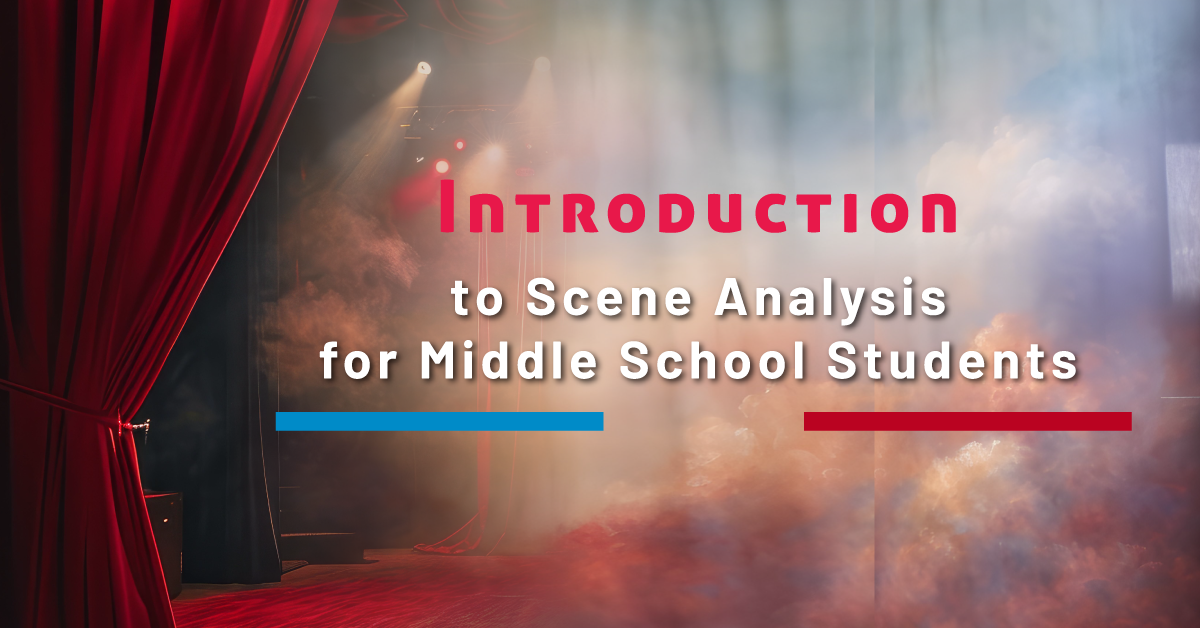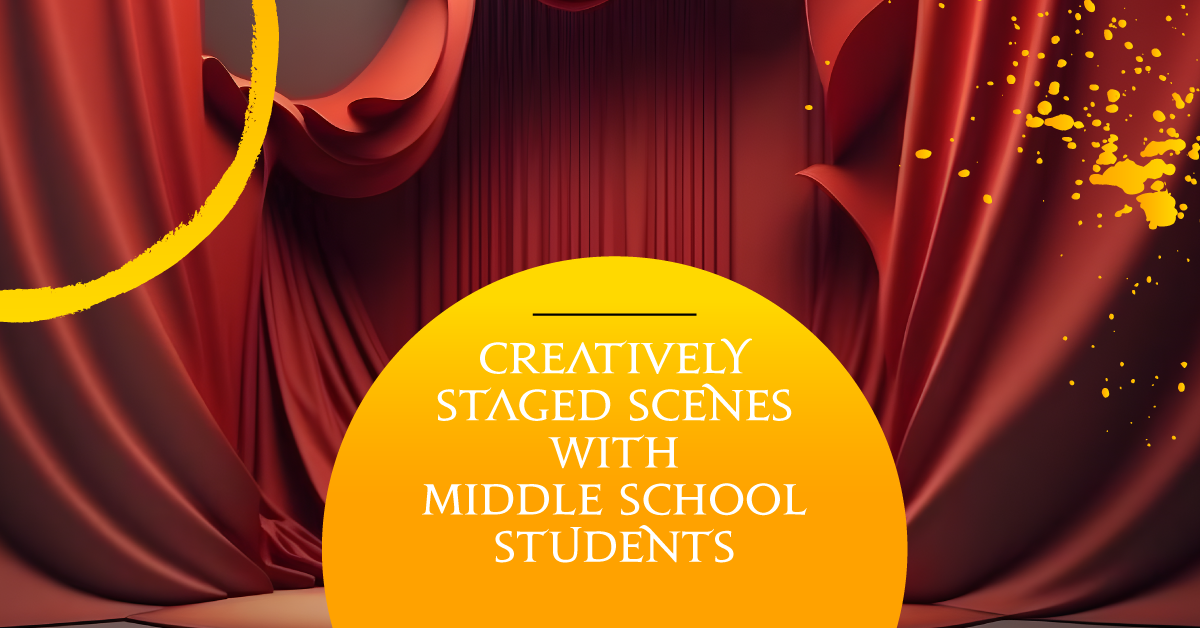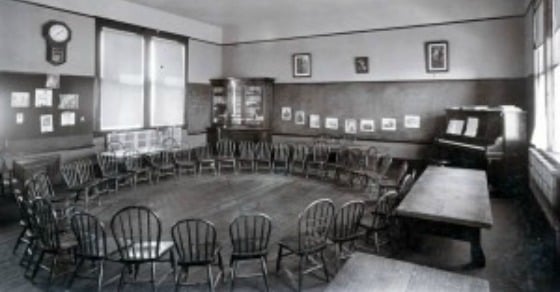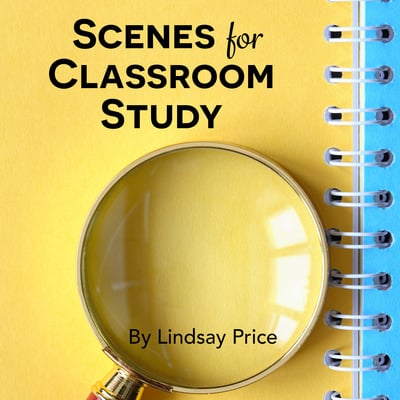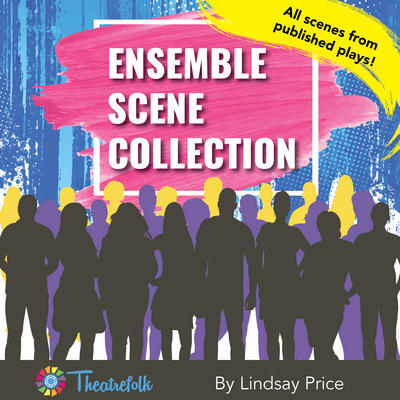A squirt gun would never be mistaken for a real gun, right? Dive into the thought-provoking world of Water. Gun. Argument and challenge what we choose to believe. A thought provoking and powerful piece in a docu-theatre style.
Introduction to Scene Analysis for Middle School Students
There are many different ways to analyze a scene for classroom study or performance: verbing, marking up the script, identifying subtext, making lists, and more. Some of these methods are easy and fast-paced, while some are more challenging or tedious.
For younger or newer drama students, try introducing the concept of scene analysis by thinking like a detective solving a mystery. Look for clues and piece them together to solve the puzzle of the scene. Using the characters’ lines, stage directions, and text, students will figure out the who, what, where, when, and why of the scene. They’ll demonstrate how they discovered the information by using specific moments in the text as proof.
First, read the scene at least twice, first as a pleasure read. You can have students read quietly by themselves, out loud in partners/small groups, or as a full class. Next, read the scene a second time to start delving into the details, looking to answer the questions below. Remember, they use the 5 W’s — who, what, where, when, why — as a questioning framework. Feel free to add additional 5W questions to your students’ analysis if you wish — these questions are a starting point.
1. Where does the scene take place?
- A geographic location – New Jersey, Brisbane, Tokyo, New York City…
- A general location – The jungle, an enchanted forest, a desert…
- A specific location – Grandma’s kitchen, Mr. Kinkade’s classroom, Doune castle…
2. When is the scene happening?
- A specific date, year, era, or time period. (Some shows are very specific. For example, the opening line of “Tune Up #1” from the musical Rent is “December 24th, 9 pm, Eastern Standard Time. From here on in, I shoot without a script.” Heathers: The Musical starts on “September 1st, 1989” in the song “Beautiful.”)
- The time of day – Morning, afternoon, evening, night?
- In relation to the rest of the show – Is this scene at the beginning or end of the show?
- In relation to other scenes – What happened immediately before and/or after the scene? (This will be helpful when students get to the “why” questions.)
3. Who are the characters?
- Basic information that we know about them – name, age, occupation, etc.
- What do we know about them? Likes, dislikes, personality traits?
- What is their relationship to the other character in the scene? Friends, family, a couple, enemies, coworkers, strangers?
4. What are the characters doing in the scene? (And why?)
What are the characters feeling in the scene? (And why?)
- In terms of what the characters are doing, start with what they are literally doing — washing the dishes, doing homework, going for a walk. What is the purpose of these actions? Do they relate to the scene somehow?
- From there, consider what the characters are “doing” in a more interpretive sense. one character might be trying to convince another to do something, or a character might be saying one thing but meaning another. This is where proof from the text really helps!
- The characters might come out and say something specific about how they’re feeling (“I feel sad”), or they might have [sadly] or [sniffling] as a stage direction to illustrate their emotions. Conversely, the characters might not be so direct in expressing their emotional state, so compare and contrast how your students interpret the characters’ feelings.
5. Why is this scene happening? Why is it important?
- Something needs to happen. Some new information has to be shared or something has to change from the beginning of the scene to the end of the scene, otherwise it doesn’t move the plot forward. What moments in the scene stick out to your students?
- Look back to the “when” questions and think about what happened before and after the scene. How does the action of this scene progress the plot of the show?
6. How do we know all this? Give proof, quotes, and examples from the text.
After answering the questions, have students complete an exit slip: Describe the purpose of scene analysis in your own words.
Take it to the next level:
Character Analysis Exercise
Script Analysis for Actors
Script Analysis: Six Ways to Fill the Gaps
Scene & Song Analysis Using Emojis
Related Articles
Scenes for Classroom Study
by Lindsay Price
Scenes for Classroom Study consists of scenes from published Theatrefolk plays and is designed to help with character study, scene work, substitute teachers, performance, Individual Event competitions and so much more.
Ensemble Scene Collection
by Lindsay Price
Looking for quality scenes for your ensemble that haven't been done a million times? This Ensemble Scene Collection contains 33 scenes from published plays - great for competition and classwork!
